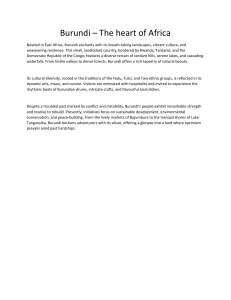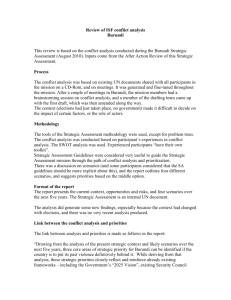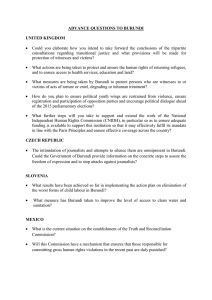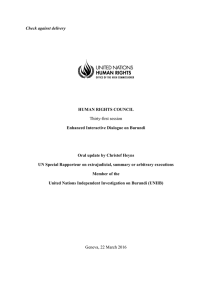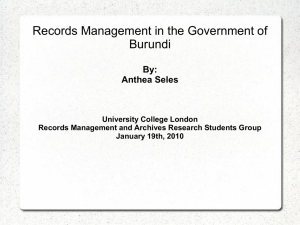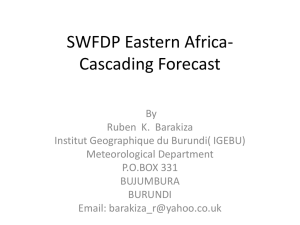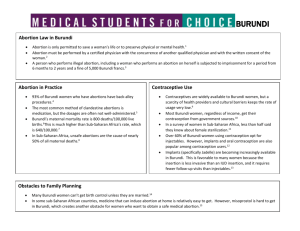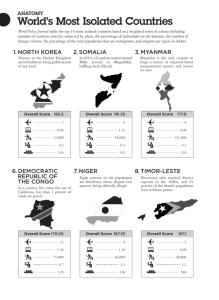Care Burundi Situational Analysis
advertisement
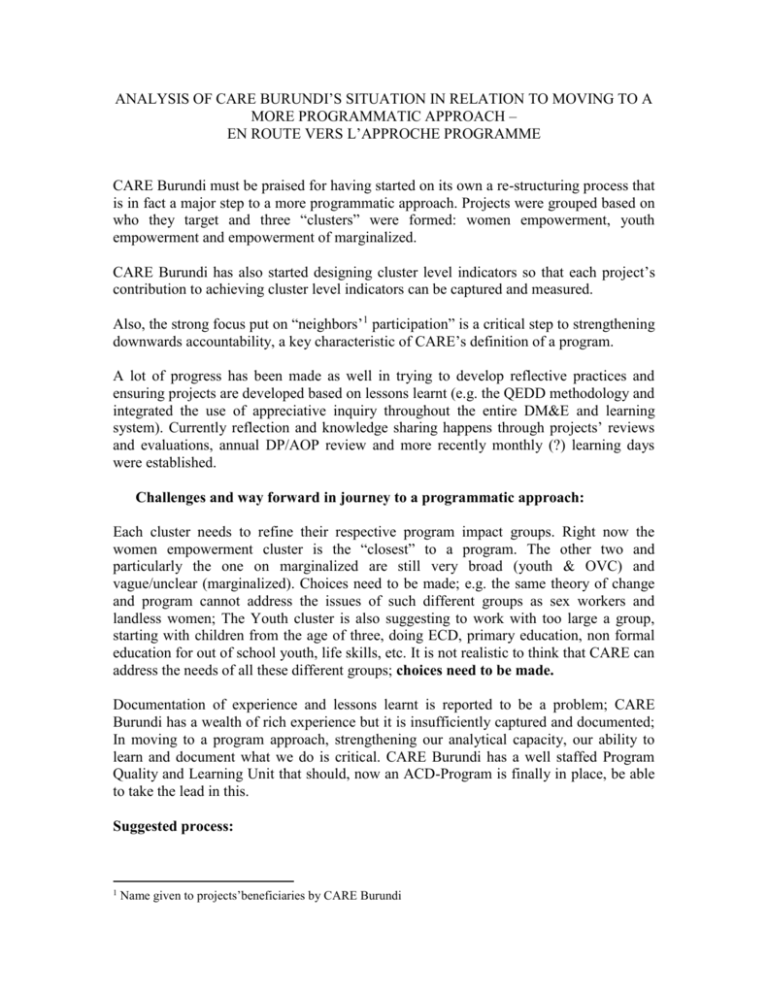
ANALYSIS OF CARE BURUNDI’S SITUATION IN RELATION TO MOVING TO A MORE PROGRAMMATIC APPROACH – EN ROUTE VERS L’APPROCHE PROGRAMME CARE Burundi must be praised for having started on its own a re-structuring process that is in fact a major step to a more programmatic approach. Projects were grouped based on who they target and three “clusters” were formed: women empowerment, youth empowerment and empowerment of marginalized. CARE Burundi has also started designing cluster level indicators so that each project’s contribution to achieving cluster level indicators can be captured and measured. Also, the strong focus put on “neighbors’1 participation” is a critical step to strengthening downwards accountability, a key characteristic of CARE’s definition of a program. A lot of progress has been made as well in trying to develop reflective practices and ensuring projects are developed based on lessons learnt (e.g. the QEDD methodology and integrated the use of appreciative inquiry throughout the entire DM&E and learning system). Currently reflection and knowledge sharing happens through projects’ reviews and evaluations, annual DP/AOP review and more recently monthly (?) learning days were established. Challenges and way forward in journey to a programmatic approach: Each cluster needs to refine their respective program impact groups. Right now the women empowerment cluster is the “closest” to a program. The other two and particularly the one on marginalized are still very broad (youth & OVC) and vague/unclear (marginalized). Choices need to be made; e.g. the same theory of change and program cannot address the issues of such different groups as sex workers and landless women; The Youth cluster is also suggesting to work with too large a group, starting with children from the age of three, doing ECD, primary education, non formal education for out of school youth, life skills, etc. It is not realistic to think that CARE can address the needs of all these different groups; choices need to be made. Documentation of experience and lessons learnt is reported to be a problem; CARE Burundi has a wealth of rich experience but it is insufficiently captured and documented; In moving to a program approach, strengthening our analytical capacity, our ability to learn and document what we do is critical. CARE Burundi has a well staffed Program Quality and Learning Unit that should, now an ACD-Program is finally in place, be able to take the lead in this. Suggested process: 1 Name given to projects’beneficiaries by CARE Burundi 1. Familiarization with the eight characteristics of a program, as defined by CARE. It is suggested that the Program Quality and Learning unit organizes a session during which cluster heads and PMs will do their own assessment, trying to determine where they stand for each characteristic. This will help (1) increase the staff’s knowledge of what a program is and (2) determine where the CO needs to put more emphasis for future projects (e.g. working more with civil society, etc). 2. Refine impact groups: since the women empowerment group is the most advanced and the UMWIZERO project is already very close to a program (with policy/advocacy, research-action components, etc), the CO could opt for starting with this one and doing the UCP analysis for this one first, prior to finalizing the refinement of the other two as the analysis of this group will probably give a lot of information to help refine the other two. 3. Deep analysis of UCPs for each of them with the following lens/journey in mind: a. Marginalized: (suggestion Michael: from subjects to citizens): this can potentially become a transversal theme that cuts across all program impact groups, rather than remaining as a separate group; b. Youth (suggestion Michael: from despair to hope) c. Women (suggestion Michael: from violence to trust). It has to be noted here that during the last years, CARE Burundi has gathered a lot of information on UCPs. Before going into the UCP analysis, it is recommended to analyze what the CO has. It might be more an issue of in-depth exploitation & analysis of available information, rather than collecting new information. 4. Stakeholder analysis: There is a need for the CO to identify who the key players are at national level in the areas linked to the program impact groups. Right now, CARE Burundi’s projects work mostly at “agency” level, but in order to have the broad impact CARE seeks to achieve, to leverage resources at national level and to really impact on the structural causes of poverty and social injustice, our work in Burundi must be linked much more strongly with national level platforms, fora and groups, including the government when possible (e.g. Ministry of Health as ABUBEF already works closely with them). In order to develop these true strategic partnerships and alliances at national level, a stakeholder analysis is required. 5. Define programs for each of the impact groups. 6. CARE Burundi needs to determine the time frame for the above 5 points and translate that into a more detailed action plan, clearly identifying who is responsible for what.
